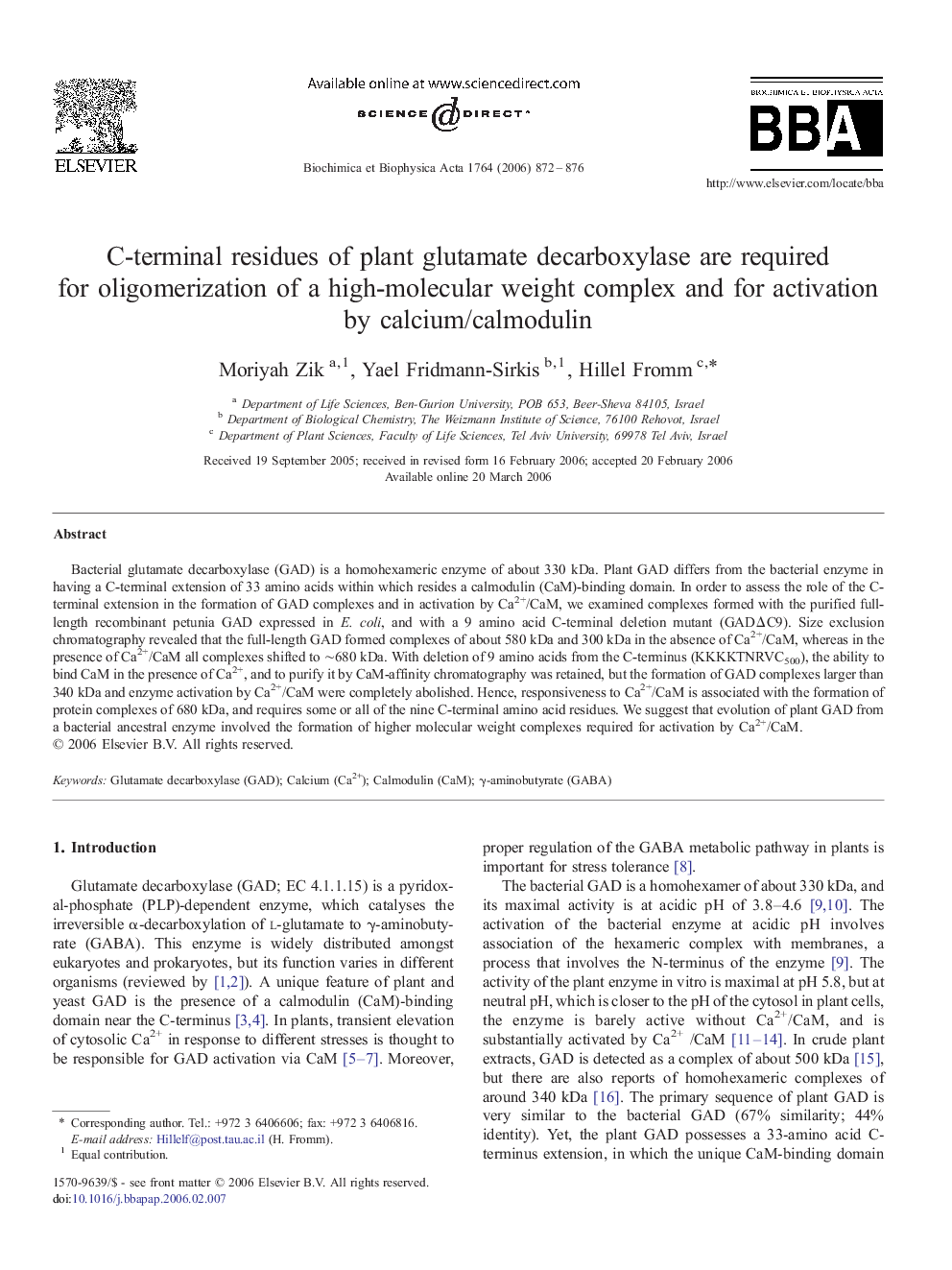| Article ID | Journal | Published Year | Pages | File Type |
|---|---|---|---|---|
| 1178564 | Biochimica et Biophysica Acta (BBA) - Proteins and Proteomics | 2006 | 5 Pages |
Bacterial glutamate decarboxylase (GAD) is a homohexameric enzyme of about 330 kDa. Plant GAD differs from the bacterial enzyme in having a C-terminal extension of 33 amino acids within which resides a calmodulin (CaM)-binding domain. In order to assess the role of the C-terminal extension in the formation of GAD complexes and in activation by Ca2+/CaM, we examined complexes formed with the purified full-length recombinant petunia GAD expressed in E. coli, and with a 9 amino acid C-terminal deletion mutant (GADΔC9). Size exclusion chromatography revealed that the full-length GAD formed complexes of about 580 kDa and 300 kDa in the absence of Ca2+/CaM, whereas in the presence of Ca2+/CaM all complexes shifted to ∼680 kDa. With deletion of 9 amino acids from the C-terminus (KKKKTNRVC500), the ability to bind CaM in the presence of Ca2+, and to purify it by CaM-affinity chromatography was retained, but the formation of GAD complexes larger than 340 kDa and enzyme activation by Ca2+/CaM were completely abolished. Hence, responsiveness to Ca2+/CaM is associated with the formation of protein complexes of 680 kDa, and requires some or all of the nine C-terminal amino acid residues. We suggest that evolution of plant GAD from a bacterial ancestral enzyme involved the formation of higher molecular weight complexes required for activation by Ca2+/CaM.
